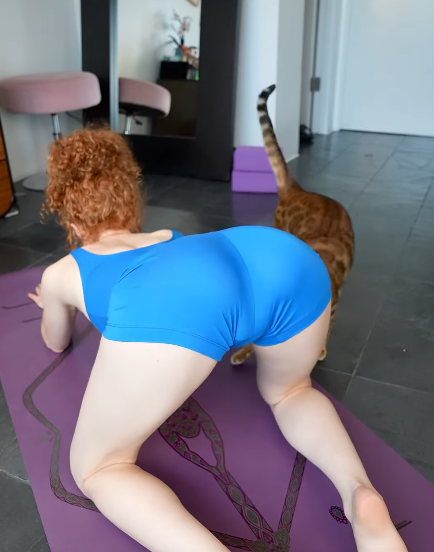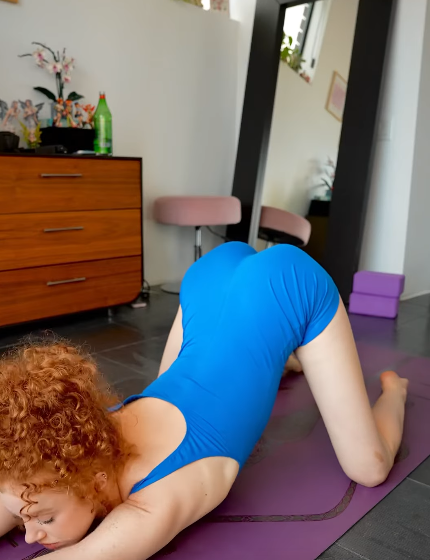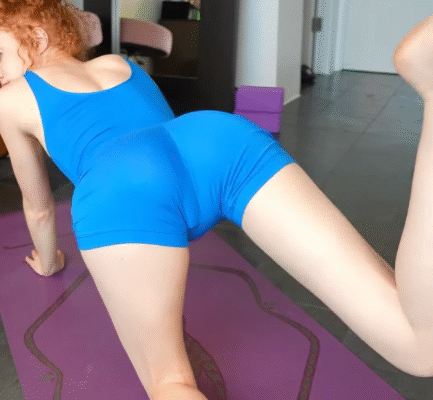
The supine spinal twist, also known in Sanskrit as Supta Matsyendrasana, is one of yoga’s most soothing, restorative, and beneficial poses. At first glance, it seems simple: lying on your back, drawing your knee across the body, and gently twisting the spine. Yet, behind this simplicity lies a deep practice that nourishes the body, calms the nervous system, and invites emotional release. Whether you are a seasoned yogi or a beginner just stepping onto the mat, the supine spinal twist can become one of your most trusted tools for relaxation, healing, and balance.
What is the Supine Spinal Twist?
The word “supine” refers to lying on the back, and “spinal twist” describes the gentle rotation of the spine across the body’s midline. In this pose, you begin lying flat, then bring one knee toward the chest and guide it across the body while keeping your shoulders anchored to the ground. The twist lengthens and decompresses the spine, stretches the chest, shoulders, and hips, and provides a gentle massage to the abdominal organs.
This posture is often practiced at the end of a yoga sequence or workout because it promotes relaxation and integrates the benefits of prior movements. However, it can also be performed on its own whenever you need to release tension or reset your body after sitting for long hours.

How to Practice the Supine Spinal Twist
Even though the pose is gentle, it requires mindful attention. Here is a step-by-step guide:
- Starting Position
Lie flat on your back with your legs extended and arms relaxed at your sides. Take a few deep breaths to settle into the mat. - Draw the Knee In
Bend your right knee and bring it toward your chest, holding it with your hands for a moment to feel the compression in your hip and lower back. - Cross the Body
Gently guide your right knee across your body to the left side. Allow it to rest on the floor if possible, or use a yoga block, cushion, or folded blanket under the knee for support. - Anchor the Shoulders
Keep both shoulders, especially the right shoulder, grounded on the mat. Your knee may not touch the ground at first, and that’s okay—the priority is to maintain openness through the chest and spine. - Arm and Head Placement
Extend your arms out in a T-shape, palms facing up. Turn your head to the right, opposite the direction of your knee, for a deeper twist, or keep it neutral if that feels more comfortable. - Breathe
Hold the pose for 5–10 breaths, feeling your spine lengthen and soften with each exhale. Notice how your rib cage expands as you inhale, massaging your internal organs. - Switch Sides
Slowly return to center, extend your leg back down, and repeat on the left side. - Finish with Neutral Rest
After both sides, lie flat with arms by your side and rest in stillness for a few breaths before moving on.

Benefits of Supine Spinal Twist
Though it appears simple, the supine spinal twist offers a wide range of physical, mental, and emotional benefits:
1. Spinal Health
The twisting motion helps maintain spinal mobility and releases tension from the vertebrae. People who spend long hours at desks or on their feet can find significant relief from lower back stiffness through this pose.
2. Hip and Shoulder Stretch
This posture stretches the outer hips, glutes, and shoulders, making it excellent for balancing the effects of sitting, driving, or carrying heavy loads.
3. Digestive Aid
By gently compressing and massaging the abdominal area, the twist can stimulate digestion and detoxification. Many practitioners find relief from bloating and sluggish digestion after practicing this pose.
4. Calming the Nervous System
Because it is a restorative posture, the supine spinal twist encourages deep breathing and activates the parasympathetic nervous system—the body’s “rest and digest” mode. This leads to reduced stress, lower blood pressure, and improved sleep quality.
5. Releasing Emotional Tension
Twists often help in letting go, both physically and emotionally. Many people experience a sense of release or even unexpected emotions surfacing during this pose, as the body unwinds held tension.
6. Improved Circulation
The gentle wringing action enhances blood flow to the spine, abdominal organs, and muscles, supporting overall vitality.

Variations of Supine Spinal Twist
One of the beautiful aspects of yoga is its adaptability. The supine spinal twist can be modified in many ways to suit your level of flexibility, body type, and energy.
- Supported Twist
Place a pillow, bolster, or blanket under your bent knee for extra support. This version is especially good for beginners or those with tight hips. - Double-Leg Supine Twist
Instead of twisting with one leg, bend both knees and let them fall together to one side. This intensifies the stretch in the lower back and hips. - Eagle-Leg Twist
Cross your legs in an eagle position before twisting to increase the stretch in your outer thighs and hips. - Restorative Version
Place a long bolster or pillow along your spine and rest in the twist with props for 5–10 minutes to deeply relax the body.
Safety and Precautions
Like any yoga pose, the supine spinal twist must be practiced with care:
- Avoid jerking or forcing your knee down. The twist should feel gentle, never painful.
- Pregnant practitioners should avoid deep twists that compress the abdomen. Instead, opt for open, supported variations.
- If you suffer from spinal injuries, herniated discs, or hip issues, consult a physician or practice under the guidance of a trained yoga teacher.
- Listen to your body. If your shoulders lift off the mat, use props to support your knee rather than straining.

When to Practice Supine Spinal Twist
This posture can be integrated into different moments of the day:
- At the end of a yoga session to relax the body before final rest in Savasana.
- After workouts to cool down muscles and release lower back tightness.
- Before bedtime to calm the nervous system and encourage restful sleep.
- During stressful moments when you need grounding and emotional release.
A Mindful Experience
The physical mechanics of the supine spinal twist are only part of its gift. The real beauty of this posture lies in its invitation to slow down and reconnect with your body. Each exhale in the twist can feel like wringing out not only physical tightness but also the mental clutter and emotional heaviness we often carry.
When practicing, try to move beyond “stretching” and instead focus on awareness: notice how your breath feels in the ribcage, how your spine lengthens, and how your body responds to stillness. This mindfulness transforms a simple shape into a deeply healing practice.
Conclusion
The supine spinal twist is a gentle yet powerful yoga pose that offers a wide spectrum of benefits—from improved spinal health and digestion to stress relief and emotional balance. Its simplicity makes it accessible to all, yet its depth can be explored endlessly through variations and mindful practice.
In a world filled with constant motion and noise, this pose serves as a reminder that healing and restoration often come from slowing down. By lying on the mat, allowing your body to twist gently, and breathing deeply, you invite peace, balance, and renewal into your life.
The next time you feel tension in your back, stress in your mind, or heaviness in your heart, lie down, cross your knee over, open your arms wide, and surrender into the soothing embrace of the supine spinal twist.



